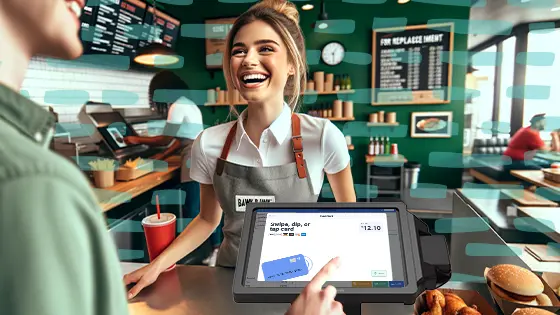Restaurant sustainability is a pressing topic, especially as more and more people learn how food waste impacts our environment. According to Forbes, 34% of all man-made greenhouse gas emissions are generated by food systems, and in the US alone, 119 billion pounds of food is wasted every year.
In the face of these challenges, many restaurant owners are asking the question: how can I reduce my restaurant’s impact on the environment?
Best practices for sustainable restaurants
These are huge systemic problems that won’t be solved by any one person—but there are some ways that you can take to make your restaurant more sustainable, without having to totally change how you operate. Some small changes can have a big impact and even save you money!
Here are three restaurant sustainability tips you can put to use right away:
Tip #1: Create a sustainable restaurant menu
Your menu is the backbone of your restaurant, and there are lots of ways you can continue to show your personality and flair while still becoming more sustainable.
First, keep your menu simple. If you have too many options, people might not order enough of some items to make it worth the cost and you’ll end up wasting the excess. Plus, if you perfect a few signature dishes, you’ll become known for those dishes in your community and your word-of-mouth traffic can increase.
In the same vein, try to craft your menu around locally grown, sustainable ingredients. This does a few things for you: It uses up produce and other perishable products quickly while they’re at their best. Plus, who doesn’t love fresh produce?
At the same time, it’s good for your local community farmers and food providers as well by giving them the chance to sell their product before it spoils and needs to be thrown away.
A menu based on local availability also gives you the freedom and flexibility to change your menu with the seasons, so if you can’t find a sustainable source for a particular ingredient, you can simply leave it off the menu.
Lastly, follow your customers’ lead! Create a menu and dishes that you know they’ll enjoy and that you’ll sell out of, so you can use up all the ingredients you’ve purchased. If you need help interpreting your sales data, Table Needs makes this super easy, so you can save money and reduce your overall food waste at the same time.
Tip #2: Choose sustainable food packaging
Once you have a sustainable menu in your restaurant, the next step is to make sure that your packaging is sustainable too. It’s pretty easy to make adjustments in this area, especially if you do a lot of takeout and delivery business, so let’s get into it.
First, choose takeout packaging that’s eco-friendly. There are tons of options that are recycled, recyclable or compostable. Try to avoid single-use plastic or individually wrapped items, which can’t be reused and often aren’t recyclable or compostable either.
Another easy and cost-effective adjustment you can make to the takeout side of your restaurant is to only include disposable utensils if your customer requests them. This prevents all that plastic from getting thrown out if customers are eating at home. Plus, it saves you money as well.
You can also eliminate takeout containers entirely! Some coffee shops already have programs in place where customers get a small discount if they bring in their own reusable mug. Consider implementing a similar program for reusable tupperware or takeout containers to reduce how many you need to buy and how many get thrown away.
Tip #3: Reduce your restaurant’s overall footprint
Your environmental footprint is something most people don’t think about often, but as a business owner, there are a few changes you can make that can reduce your impact on the planet.
One way is to switch to eco-friendly cleaning products. Restaurant owners and workers are all-too familiar with all the products that go into keeping a restaurant clean, and swapping some of those out for an eco-friendlier alternative is a relatively easy way to reduce your footprint. You can also research some natural alternatives as well, like using vinegar as a cleaner.
Another way you can create a more sustainable restaurant is to reduce your water usage. Try to consolidate your dish washing, and turn off your faucets when they’re not in use. If you’re open to a larger investment, consider finding low-flow plumbing options for the kitchen and bathrooms.
You may be doing this already, but if you’re not, try to recycle and compost. This is a simple way to make sure the waste that’s automatically generated by a business is disposed of in the right way.
And if you can, grow your own food. Smaller items like herbs and veggies don’t have to take up too much space or manpower, and can help contribute to a healthy compost ecosystem in your restaurant
Some of the paths to a more sustainable restaurant are quick fixes, like swapping out your containers, and some will require more of a long-term investment in your space and business—like changing your plumbing or growing your own food.
At the end of the day, it matters less the scale of the changes that you make to become a more sustainable restaurant; what matters is that you get started. Whatever changes are within your budget, staff power, and resources are all steps in the right direction.
Ready to learn more about creating a menu that is sustainable AND profitable? Table Needs can help! Connect with us today by scheduling a call below.
Follow us for tips, news, and tutorials to run a successful small restaurant.






